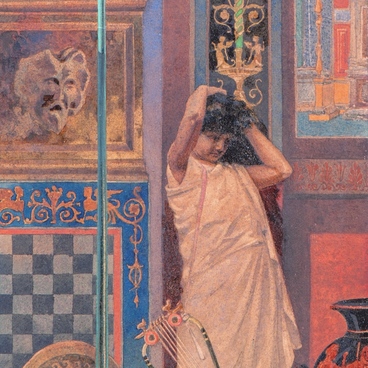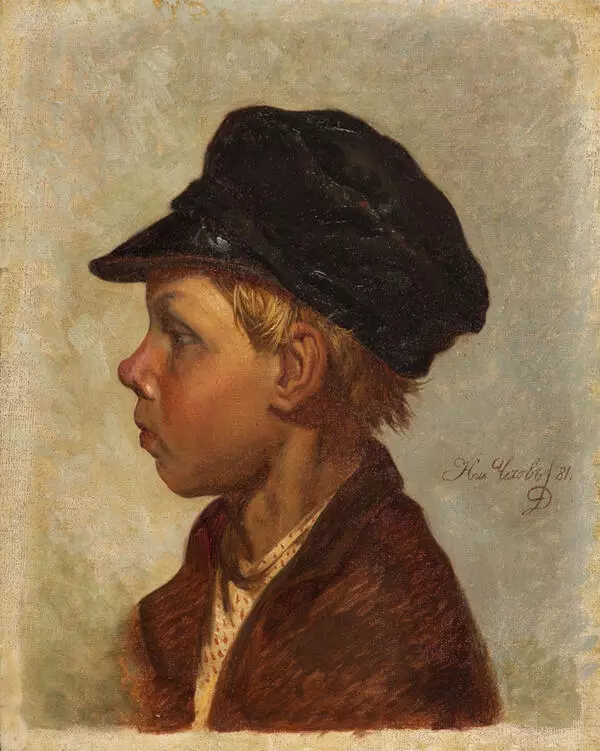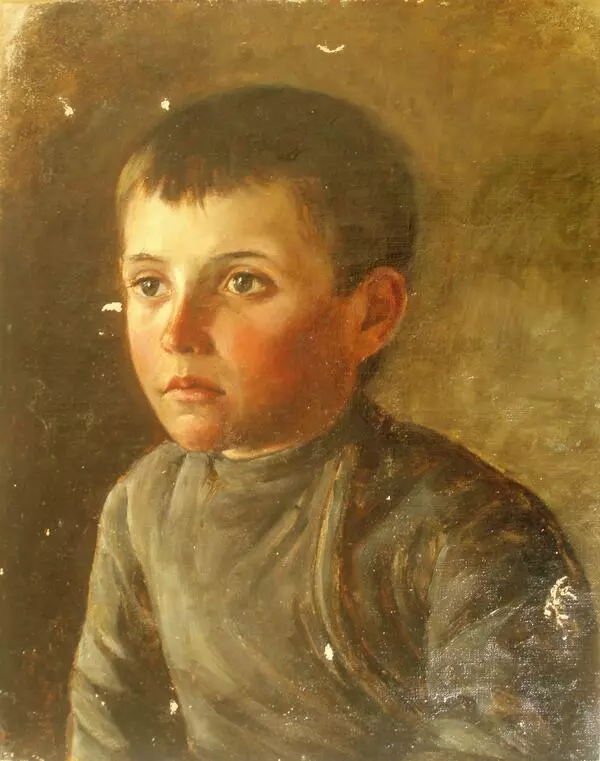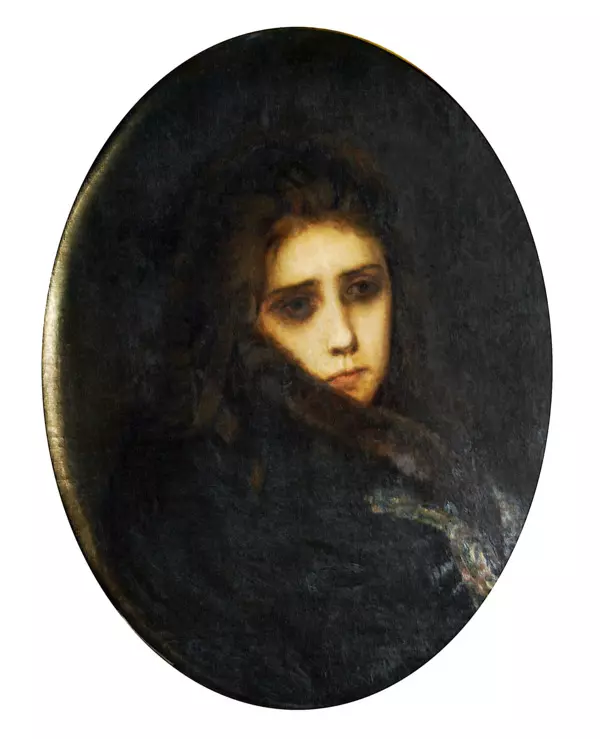Anton Chekhov gave the painting “Girl in a Blue Dress” as a wedding present to his friends in Novocherkassk. Many years later, it was found by Sergey Mikhailovich Chekhov, the writer’s nephew, who was exploring his family’s legacy. He discovered this painting in Taganrog, and it was a very complicated story.
The oldest employee of the Taganrog Local History Museum, Pyotr Davidovich Karpun, mentioned to Sergey Chekhov that in the first post-war year someone brought to the museum a painting by his uncle, Nikolay Chekhov. The person offered to sell it to the museum for two cars of coal. The museum did not have such resources, and they never bought the painting. The name of the painting’s owner was unknown, they only remembered that he was an optician from Novocherkassk.
Sergey Chekhov decided to find the painting. There were no “opticians with a picture” in Novocherkassk pharmacies, but people remembered that an old optician Mikhailov had retired a few years earlier. They found him. He said that about forty years before his wife’s parents gave him this painting as a wedding present, and he did not know how it had landed with them. Mikhailov gave the painting to his son who lived in Moscow. That is how they found and purchased “Girl in a Blue Dress” for the museum.
The painting is executed in the Russian style, in the manner of Pavel Fedotov. In a dimly lit room, paintings in massive gilded frames hang on the walls, and a young girl in a lush blue dress plays the piano. The girl’s face, her waist, hands, and piano keys are brightly lit. Bright light also illuminates the sheet music on the stool. In the background in the semi-darkness a figure of a man seated at the table faces the beholder, his gaze and all attention are focused on the girl.
The picture portrays Yulinka Lyadova, a distant maternal relative of the Chekhovs, and a great family friend Mikhail Dyukovsky. Nikolay Chekhov accompanied Dyukovsky to Shuya to ask for Yulia Lyadova’s hand in marriage. A letter to Yulia from Maria Pavlovna Chekhova dated 1879 has been preserved,
The oldest employee of the Taganrog Local History Museum, Pyotr Davidovich Karpun, mentioned to Sergey Chekhov that in the first post-war year someone brought to the museum a painting by his uncle, Nikolay Chekhov. The person offered to sell it to the museum for two cars of coal. The museum did not have such resources, and they never bought the painting. The name of the painting’s owner was unknown, they only remembered that he was an optician from Novocherkassk.
Sergey Chekhov decided to find the painting. There were no “opticians with a picture” in Novocherkassk pharmacies, but people remembered that an old optician Mikhailov had retired a few years earlier. They found him. He said that about forty years before his wife’s parents gave him this painting as a wedding present, and he did not know how it had landed with them. Mikhailov gave the painting to his son who lived in Moscow. That is how they found and purchased “Girl in a Blue Dress” for the museum.
The painting is executed in the Russian style, in the manner of Pavel Fedotov. In a dimly lit room, paintings in massive gilded frames hang on the walls, and a young girl in a lush blue dress plays the piano. The girl’s face, her waist, hands, and piano keys are brightly lit. Bright light also illuminates the sheet music on the stool. In the background in the semi-darkness a figure of a man seated at the table faces the beholder, his gaze and all attention are focused on the girl.
The picture portrays Yulinka Lyadova, a distant maternal relative of the Chekhovs, and a great family friend Mikhail Dyukovsky. Nikolay Chekhov accompanied Dyukovsky to Shuya to ask for Yulia Lyadova’s hand in marriage. A letter to Yulia from Maria Pavlovna Chekhova dated 1879 has been preserved,









